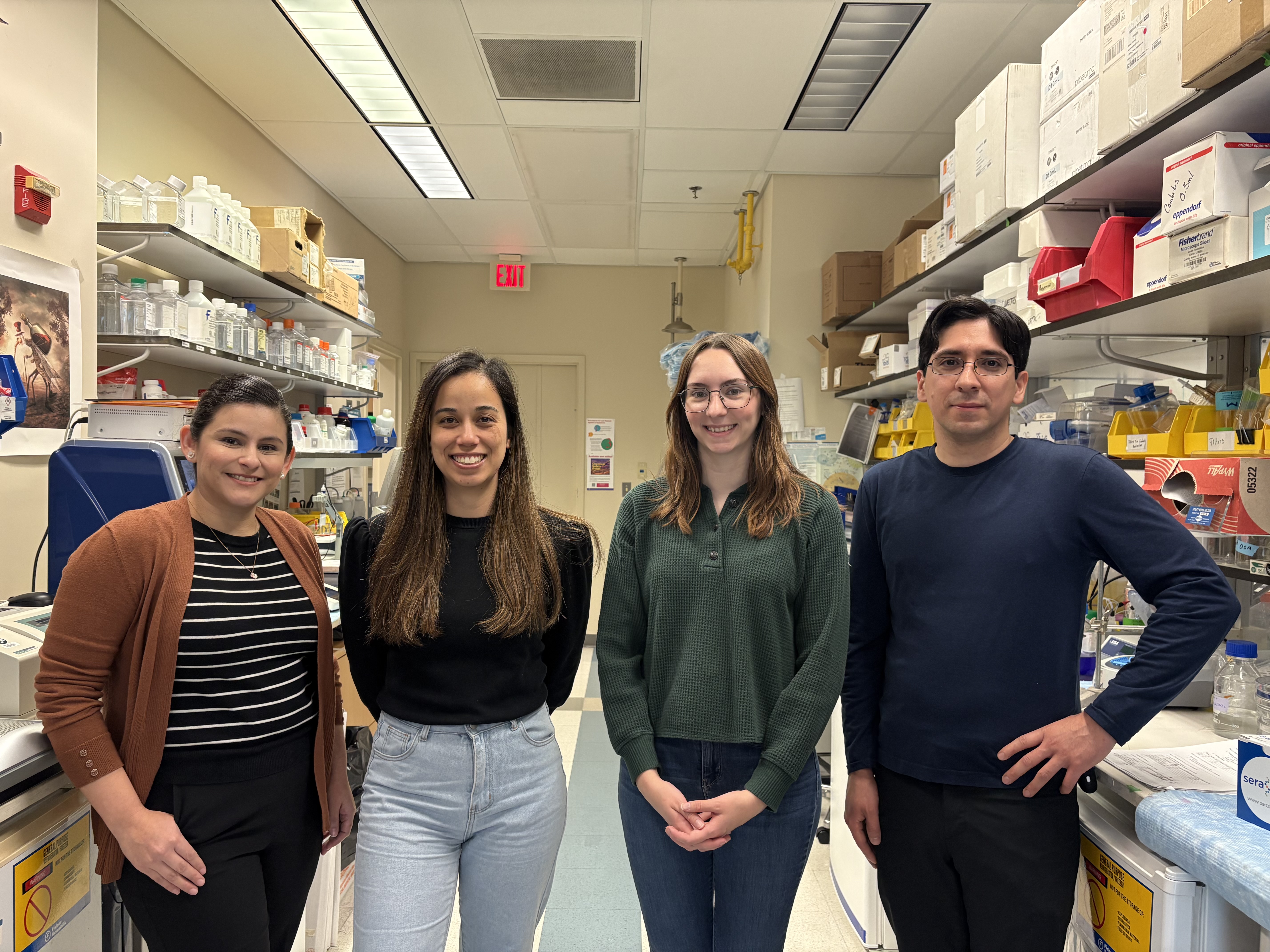Molecular Entomology Unit
Established in 2018
Eric Calvo, Ph.D.
Chief, Molecular Entomology Unit
Stadtman Investigator
NIH Distinguished Scholar

Major Areas of Research
- Role of arthropod saliva in vector-borne disease transmission
- Functional salivary transcriptomics and proteomics
- Gene-editing approaches (based on the CRISPR/Cas9 system) to characterize gene function
- Discovery of new salivary functions in blood feeding arthropods
Program Description
Although the role of mosquitoes as vectors of viruses and parasites was first discovered in the late 1800s, little is known about the function of most mosquito salivary proteins and their effects on disease transmission. The overall objective of my research is to understand the mechanisms of the vector-host and vector-pathogen interactions at the biochemical and molecular level. My approach uses biological and biophysical methodologies to first identify the components of an interaction system (e.g., mosquito-arbovirus) and then to examine the mechanistic details of the interaction. A combination of bioinformatic analyses, recombinant protein production, assay development, and gene editing (based on the CRISPR/Cas9 system) are being used to accomplish this goal.
In the last decade, we have contributed to the analysis of several salivary transcriptomes from blood-feeding arthropods. This unprecedented insight into the complexity of salivary molecules indicates that their molecular diversity as well as the diversity of their targets is larger than previously suspected. The biological function of most salivary proteins and their relevance in blood feeding and pathogen transmission remain to be discovered. The exponential increase in transcriptomic and genetic data, in volume and complexity, demands novel and creative methods for functional analysis and annotation. We aim to extend the functional characterization of salivary proteins from blood feeding arthropods and their role in pathogen transmission. Ultimately, this information will be synthesized into an integrated model of the vector’s blood-feeding process and further the understanding of disease transmission and the host’s response to vector-borne diseases. The goal of this research program is to gain new insights into vector-host and vector-pathogen basic biology and, ultimately, to develop new transmission-blocking strategies for vector-borne diseases.
Biography
Education
Ph.D., Institute of Biomedical Sciences, University of Sao Paulo, Brazil
B.Sc., University of Havana, Cuba
Languages Spoken
Spanish, PortugueseDr. Calvo was born and raised in Havana, Cuba. He received his B.Sc. in biochemistry from the University of Havana, Cuba, and his Ph.D. from the Institute of Biomedical Sciences, University of Sao Paulo, Brazil. He did postdoctoral work at the University of California, Irvine, and NIAID. Dr. Calvo became a staff scientist first at the FDA and then at NIAID, where he is now an Earl Stadtman tenure-track investigator and NIH Distinguished Scholar. The primary aim of his research is to enrich the functional annotation of disease vectors’ salivary proteins and provide a better understanding of their biologic function and potential involvement in pathogen transmission. His goal is to develop new control strategies to reduce or eliminate vector-borne diseases. He has also served as guest editor and reviewer for several scientific journals and international funding agencies.
As Chief of the Molecular Entomology Section, Dr. Calvo implements and directs a research program aimed at elucidating the mechanisms of vector-host and vector-pathogen interactions at the biochemical and molecular levels. To accomplish these aims, Dr. Calvo uses a combination of bioinformatic analyses, recombinant protein production, and the CRISPR/Cas9 gene-editing system. Additional efforts by Dr. Calvo include updating senior staff regarding the development of new research projects and technologies and providing expert analysis and input for ongoing vector-based vaccine research. He is responsible for budget management, annual reporting of research progress, directing staff and mentoring of postdoctoral scientists, technicians, and students. He presents his work at national and international meetings, prepares manuscripts for publication in high impact, peer reviewed scientific journals, and continues to develop productive research collaborations.
Selected Publications
Williams AE, Gittis AG, Botello K, Cruz P, Martin-Martin I, Valenzuela Leon PC, Sumner B, Bonilla B, Calvo E. Structural and functional comparisons of salivary α-glucosidases from the mosquito vectors Aedes aegypti, Anopheles gambiae, and Culex quinquefasciatus. Insect Biochem Mol Biol. 2024 Apr;167:104097.
Shrivastava G, Valenzuela-Leon PC, Botello K, Calvo E. Aedes aegypti saliva modulates inflammasome activation and facilitates flavivirus infection in vitro. iScience. 2023 Dec 2;27(1):108620.
Martin-Martin I, Kojin BB, Aryan A, Williams AE, Molina-Cruz A, Valenzuela-Leon PC, Shrivastava G, Botello K, Minai M, Adelman ZN, Calvo E. Aedes aegypti D7 long salivary proteins modulate blood feeding and parasite infection. mBio. 2023 Dec 19;14(6):e0228923.
Valenzuela-Leon PC, Campos Chagas A, Martin-Martin I, Williams AE, Berger M, Shrivastava G, Paige AS, Kotsyfakis M, Tirloni L, Calvo E. Guianensin, a Simulium guianense salivary protein, has broad anti-hemostatic and anti-inflammatory properties. Front Immunol. 2023 Jul 3;14:1163367.
Smith LB, Duge E, Valenzuela-León PC, Brooks S, Martin-Martin I, Ackerman H, Calvo E. Novel salivary antihemostatic activities of long-form D7 proteins from the malaria vector Anopheles gambiae facilitate hematophagy. J Biol Chem. 2022 Jun;298(6):101971.
Research Group
MEU seeks to understand the mechanisms of vector-host & vector-pathogen interactions at the biochemical & molecular levels. We use bioinformatic analyses, recombinant protein production, structural biology, assay development, & gene editing (based on CRISPR/Cas9) to discover the functions of salivary proteins in blood feeding & pathogen transmission.


